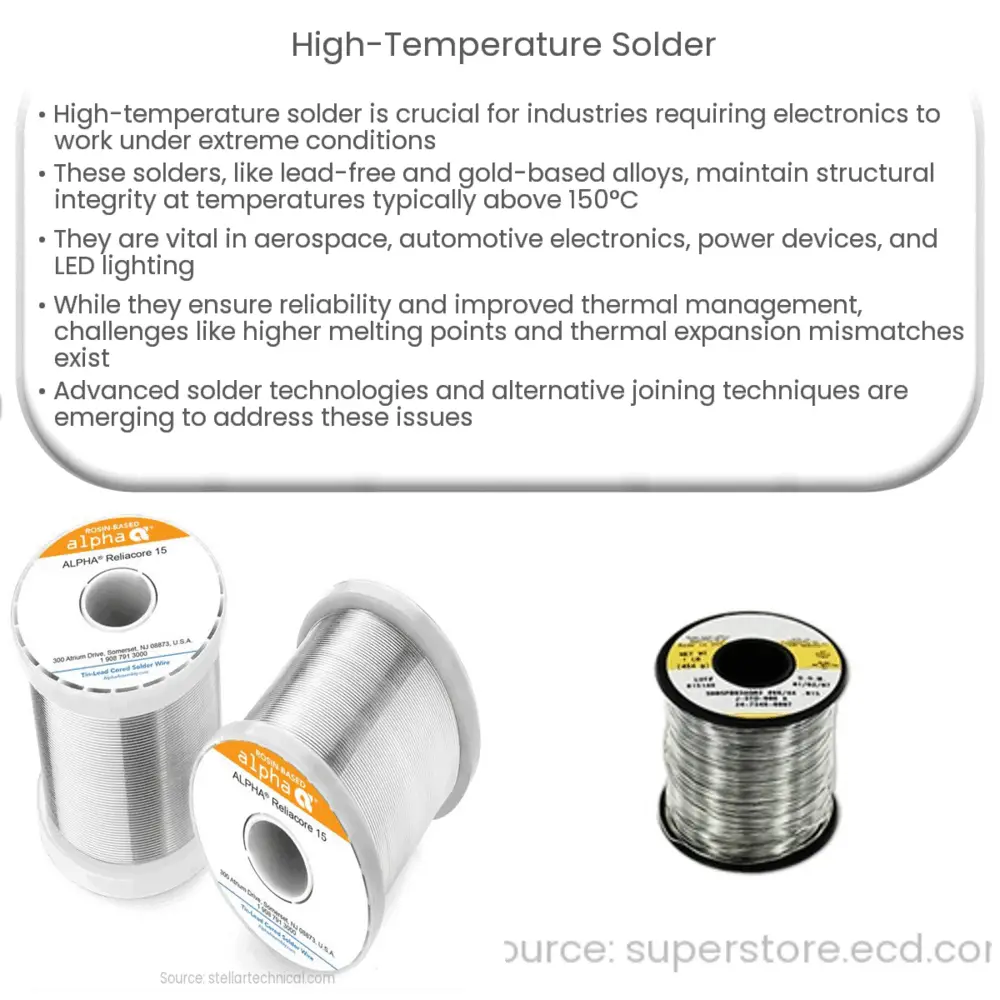High-temperature solder ensures reliable connections in electronics exposed to extreme heat, offering enhanced durability and thermal management.

High-Temperature Solder: A Comprehensive Overview
Introduction
High-temperature solder is a specialized type of solder alloy designed to function effectively under extreme temperatures. With advancements in electronic technology and the increasing demand for devices that can withstand harsh conditions, high-temperature solder has become an essential component in various industries. In this article, we will explore the characteristics, applications, and benefits of high-temperature solder.
Characteristics of High-Temperature Solder
High-temperature solder alloys are formulated to maintain their structural integrity and performance at elevated temperatures, typically above 150°C (302°F). The most commonly used high-temperature solder alloys include:
- Lead-Free Alloys: Composed of tin, silver, and copper (SAC alloys), these lead-free solders have become the industry standard due to their excellent performance and environmental friendliness. They have a melting point of around 217°C (422°F) and are used in applications requiring higher temperature resistance.
- High-Tin Alloys: These alloys contain a higher percentage of tin, often combined with silver, copper, and/or bismuth. High-tin alloys have melting points ranging from 230°C to 300°C (446°F to 572°F) and provide excellent wetting and mechanical strength.
- Gold-Based Alloys: Gold-containing solders, such as gold-tin and gold-germanium, offer exceptional thermal stability and corrosion resistance. With melting points between 280°C and 400°C (536°F to 752°F), these alloys are suitable for high-reliability applications.
Applications of High-Temperature Solder
High-temperature solder is employed in a variety of applications where components are exposed to extreme heat or harsh environments. Some common applications include:
- Aerospace and Defense: Electronic systems in aircraft, satellites, and military equipment must withstand extreme temperature fluctuations and vibrations. High-temperature solder is used to ensure reliable connections and long-lasting performance in these critical systems.
- Automotive Electronics: Under-the-hood electronic components, such as engine control units and sensors, are exposed to high temperatures and harsh environments. High-temperature solder alloys provide the necessary durability and reliability for these applications.
- Power Electronics: Power devices, such as converters and inverters, generate significant amounts of heat during operation. High-temperature solder is essential for maintaining reliable connections and efficient thermal management in these systems.
- LED Lighting: High-power LED lighting systems produce considerable heat, necessitating the use of high-temperature solder to ensure reliable connections and optimal performance.
Benefits of High-Temperature Solder
Utilizing high-temperature solder in various applications offers several advantages, including:
- Enhanced Reliability: High-temperature solder alloys maintain their structural integrity and electrical conductivity under extreme temperatures, ensuring reliable connections and long-lasting performance.
- Improved Thermal Management: High-temperature solder alloys can dissipate heat more effectively, contributing to better thermal management in electronic systems.
- Environmentally Friendly: Lead-free high-temperature solder alloys reduce the environmental impact of electronics manufacturing and disposal, helping industries meet environmental regulations and promote sustainability.
While high-temperature solder offers numerous benefits, it also presents certain challenges that must be addressed during the soldering process:
- Higher Melting Points: The elevated melting points of high-temperature solder alloys require specialized soldering equipment and techniques to ensure proper wetting and joint formation. This may increase manufacturing costs and require additional training for operators.
- Thermal Expansion Mismatch: The different coefficients of thermal expansion (CTE) between solder alloys and the materials they join can lead to mechanical stress and potential failure of the solder joint. Proper selection of solder alloy and substrate material is crucial to minimize this issue.
- Intermetallic Compound (IMC) Formation: The formation of IMCs at the interface between the solder and the base material can affect the mechanical and electrical properties of the joint. Controlling the soldering process and selecting compatible materials can help reduce IMC-related issues.
Future Trends in High-Temperature Solder
As the demand for high-performance electronic devices and systems continues to grow, the development of advanced high-temperature solder alloys and processes is essential. Some emerging trends in this field include:
- Nanotechnology-Enhanced Solder: The addition of nanoparticles to solder alloys can improve their mechanical, thermal, and electrical properties, leading to higher performance and reliability in high-temperature applications.
- Low-Ag SAC Alloys: New formulations of SAC alloys with lower silver content can offer similar performance at a reduced cost, making them more attractive for various industries.
- Alternative Joining Techniques: The development of alternative high-temperature joining methods, such as diffusion bonding and transient liquid phase bonding, can offer new possibilities for creating robust and reliable connections in high-temperature applications.
Conclusion
High-temperature solder plays a critical role in various industries that require electronic systems to function reliably under extreme temperatures and harsh environments. With a range of specialized alloys and applications, high-temperature solder offers numerous benefits, including enhanced reliability, improved thermal management, and environmental friendliness. As the demand for high-performance electronics continues to grow, ongoing research and development efforts are essential to overcome the challenges and leverage emerging trends in high-temperature solder technology.

